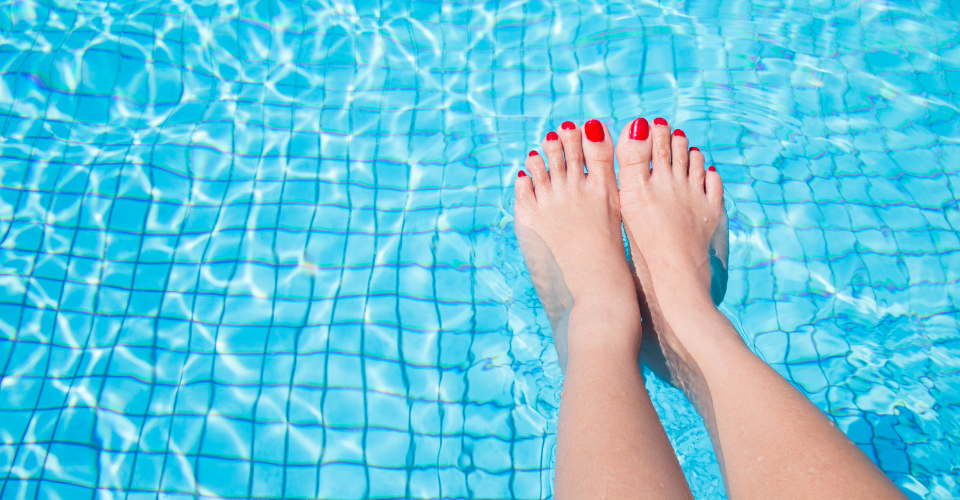8 Most Effective Home Remedies for Ingrown Toenails
Taking off your shoes after a tiring day is one of the best feelings, but not when you suffer from an ingrown toenail. Unfortunately, they’re very prevalent and can happen to anyone.

If you are looking for some home remedies for ingrown toenails, you are in the right post. This blog post contains the most effective home remedies for ingrown toenails but first, let’s get to know how you can recognize them!
Below are some symptoms to help you recognize ingrown toenails,
- Redness around the nail
- Swelling
- Pain and inflammation in the corners of the nail
- Infection, if your condition is severe.
If you suffer from these symptoms, perhaps you have an ingrown nail. In the first stages, it’s not severe, and you can treat it quickly. However, keeping it untreated may lead to infection, and further than that, your Podiatrist will recommend you remove your nail.
So, home remedies can be the best for you if you have an ingrown nail at mild stages. Here are the most effective home remedies for ingrown toenails that will help you get rid of your ingrown nail quickly so that you don’t need to remove them!
8 Home Remedies for Ingrown Toenails
As mentioned previously, if your condition is mild, there can be nothing better than home remedies for your nail. They will not only treat it but also prevent the risk of infection.

Some of these home remedies include:
1. Essential Oils
The first item on the home remedies for ingrown toenails list is “Essential Oils.” Of course, everyone loves essential oils for their sweet scent, but now you have one more reason to love them.
They can be an ideal treatment for mild ingrown nails as they have anti-inflammatory and anti-bacterial properties, which help them reduce inflammation and get rid of serious infections.
Essential oils like eucalyptus oil are good at reducing inflammation and swelling. At the same time, tea tree oil destroys fungi and bacteria.
How to use it: You can simply apply these essential oils to the affected area and let it stay there for 10 minutes, do it twice a day.
2. Soak Your Foot in Warm and Soapy Water
Once you get an ingrown nail, you have to deal with a lot of pain, but this remedy will ease your pain. It will help if you soak your foot in warm and soapy water. It will eventually reduce swelling and nail pain, but dry your foot thoroughly after finishing this process.
How to use it: Take a tub in which your foot can form properly and soak your foot in a mixture of warm and soapy water. It’s recommended to do this 3 times a day for 20 minutes.
3. Toe Braces
Although the braces aren’t a home remedy, they are still an effective treatment. It’s a protector of your nail that works as a cushion barrier between your toenail and the inside of your shoe. It prevents rubbing your infected nail, which stops the process of infection.
In addition, they will repair the growth direction of your nail so that you don’t face this condition again.
How to use it: Toe braces are made of rubber and are easy to fit on your toenail. They are available at any pharmacy, so you won’t face a hard time finding them.
4. Apple Cider Vinegar
Like essential oils, apple cider vinegar is another well-known product with anti-microbial and anti-inflammatory properties.
People are using apple cider vinegar for all skin problems nowadays, making it an ideal remedy for treating a nail. Once you apply it, you will eventually see changes and experience reduced pain.
How to use it: Just like soapy water, take a tub with warm water and create a mixture of 1/4 cup apple cider vinegar. Soak your affected foot daily for 15-20 minutes. Dry your feet after you are done.
5. Hydrogen Peroxide
It’s available at every house, but if not, you can find it in a grocery store or order it online. Maybe an ingrown nail hates being soaked, but you must wash your feet in water and hydrogen peroxide.
Hydrogen peroxide is a mild antiseptic; it helps prevent infections and the entry of bacteria, which is why it’s perfect for cleaning cuts, scratches, and wounds.
How to use it: Take a tub or a bucket, and add water to it. For every half cup of warm water, add at least 3% hydrogen peroxide. Soak your foot in this solution for at least 20 minutes. This should be done 2 to 3 times daily for better results.
6. Wear Comfortable Shoes
Tight-fitting shoes are one of the most common causes of an ingrown nail. If your nails don’t have enough space, they get pushed inside, resulting in an ingrown nail.
You should wear shoes that are a little bit flexible so that your nails get enough space and the situation doesn’t worsen.
After the treatment, make sure not to wear any shoes. For example, wear sandals before going anywhere but do not go barefoot.
7. Trim the Nail
After soaking, your nails will become soft, which is the best time to trim them.
If your nail is in proper condition, then it’s best to pull the toenail from the skin and trim it. Afterward, keep the skin clean to avoid infections.
Post You May Like: How to Keep Your Natural Long Nails Healthy and Strong?
8. Over-the-Counter Treatment
Last but not least, in the bucket of home remedies for ingrown toenails are over-the-counter treatments such as antibiotic ointment or cream that can rapidly reduce the swelling, infection, and risk of disease.
You can apply these ointments three times a day, and they can be found in any pharmacy but make sure to ask your Podiatrist about them.
You can check out the ingrown toenail treatment in Pittsburgh; there are very experienced podiatrists like Doctor Tina.
Wrapping up:
Ingrown nails are common, but ignoring them shouldn’t be. The earlier you treat, the fewer risks of infections you will receive.
Soaking your foot in apple cider vinegar, soapy water, and hydrogen peroxide can relieve the pain and heal the condition. If these don’t work, you can use OTC treatments too.
Lastly, for any health concerns, contact your Podiatrist, and follow the process prescribed by your Podiatrist.

Read related:
- 7 Tips to Beautify Your Natural Long Nails
- Here’s How Your Long Nails Can Be Broken!
- How to Apply Nail Polish the Right Way With These 8 Simple Steps?
Hey there! I’m Raizy, a makeup, beauty, and manicure enthusiast. My passion for nail art and manicures knows no bounds; it’s something I can’t quite put into words. Every day, my goal is to dive into the world of manicures and nail art, and I’m thrilled to share my thoughts and expertise with all of you.
